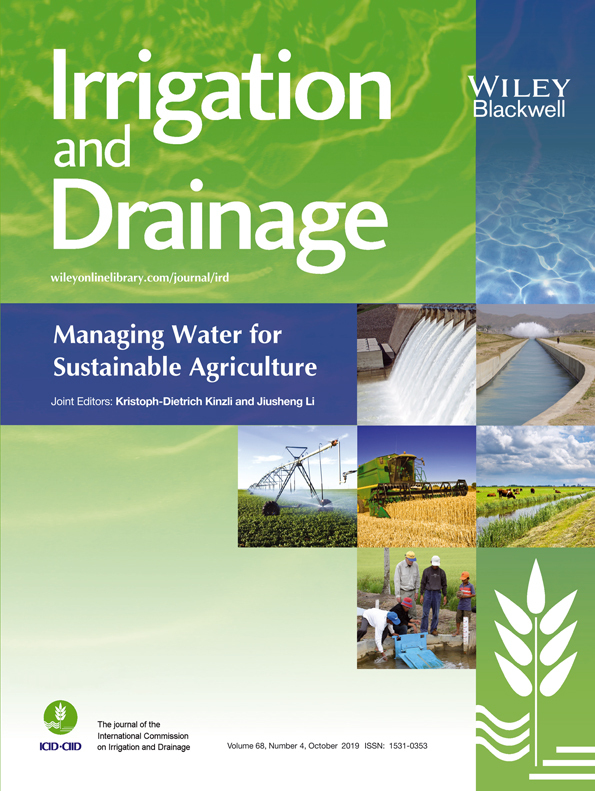SIMULATION OF SOIL WATER CONTENT FOR IRRIGATION MANAGEMENT BASED ON ON-FIELD AND CERES-WHEAT SIMULATED DATA IN WINTER WHEAT IN THE NORTH CHINA PLAIN†
Abstract
enAccurate forecasting of the soil water in crop growth is crucial for developing an irrigation management strategy and saving water resources. The CERES model can be used to quantitatively predict the soil water content (SWC), but its accuracy and stability should be improved. The objectives of this research were to assess the CERES-Wheat model for its ability to simulate the SWC in the winter wheat growth season and to study the possibility of improving simulation accuracy by building a modified model through introducing on-field data and simulated values of CERES-Wheat. Field experiment data of the varieties ShiJiaZhuang 8 and JiMai 22 from three to four irrigation treatments conducted over 4 years were used to compare precision of the CERES-Wheat model and the modified model for SWC in the North China Plain. On average across all soil layers between 20 and 120 cm and two winter wheat varieties, the NRMSE decreased from 20.3% with the CERES-Wheat model to 13.2% with the modified model. The results showed that the further improvement of SWC based on on-field data and simulated data of CERES-Wheat may be possible. Application prospects of dynamic water management of the modified model by introducing on-field data during the wheat growth season were also discussed. © 2019 John Wiley & Sons, Ltd.
Résumé
frLes prévisions précises de la teneur en eau du sol lors de la croissance des cultures sont essentielles pour élaborer une stratégie de gestion de l'irrigation et préserver la ressource en eau. Le modèle CERES peut être utilisé pour prédire quantitativement la teneur en eau du sol (SWC), mais sa précision et sa stabilité devraient être améliorées. Les objectifs de cette recherche étaient d'évaluer le modèle CERES-Blé pour sa capacité à simuler le SWC pendant la saison de croissance du blé d'hiver et à étudier la possibilité d'améliorer la précision de la simulation en construisant un modèle modifié en introduisant des données de terrain et des valeurs simulées de CERES-Blé. Les données d'expérimentation de terrain des variétés ShiJiaZhuang 8 et JiMai 22 issues de trois à quatre traitements d'irrigation menés sur une période de 4 ans ont été utilisées pour comparer la précision du modèle CERES-Blé et du modèle modifié pour la SWC dans la plaine de la Chine du Nord. En moyenne, dans toutes les couches de sol comprises entre 20 et 120 cm et deux variétés de blé d'hiver, la NRMSE est passée de 20.3% avec le modèle CERES-Blé à 13.2% avec le modèle modifié. Les résultats ont montré que l'amélioration future de la SWC sur la base des données de terrain et des données simulées par CERES-Blé pourrait être possible. La perspective d'application sur la gestion dynamique de l'eau du modèle modifié en introduisant des données de terrain pendant la saison de croissance du blé a également été discutée. © 2019 John Wiley & Sons, Ltd.




